Pattern Focus: The Power of Paisley
http://decor-ideas.org 04/23/2015 03:14 Decor Ideas
While paisley may remind you of men’s neckties, kaleidoscopes and psychedelic ’60s garb, it’s actually an ancient Persian pattern. Aside from being truly interesting to look at, paisley ranges from simple to ornate, large to small and bold to subtle, and even bridges multiple generations. Here’s how you can get this uniquely versatile pattern to work in your home.
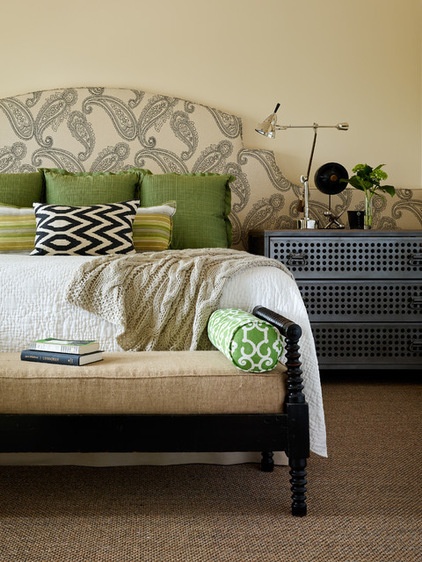
The term “paisley” originated in the Scottish mill town of Paisley, where fabric produced in the 18th and 19th centuries copied Mughal Indian versions of paisley patterns. However, paisley’s true roots stem from Iran, where it’s known as boteh or buta. The pattern was created about A.D. 224, and its kidney- or tear-shaped design represents stylized vegetal motifs.
Seventeen centuries on, paisley is still rockin’ it. Not only for clothing, but as a fabulous pattern for the home. With its wide range of looks, paisley is the king of flexibility.
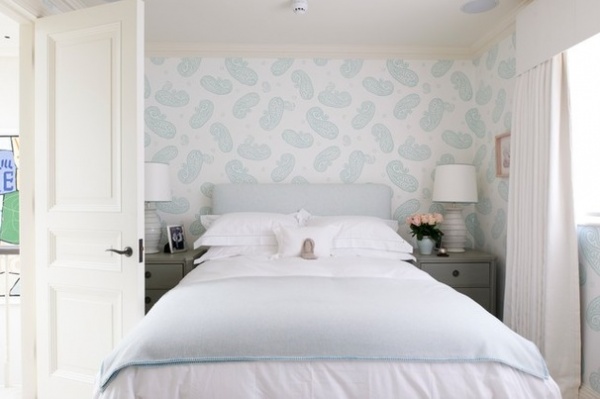
Paisley patterns can be simple or complex. First decide whether you would like your paisley to stand out or be mixed in with other design elements.
“Floating island” paisley. The paisley in the wallpaper shown here is simple and straightforward. Each shape is its own entity floating against a solid background. Paisley like this reminds me of a happy bunch of little islands.
This type of pattern will appear patchy, especially when there is a high contrast between the design and the background. Make sure this is the aesthetic you’re shooting for and be sure to get a full-size sample of the fabric or wall covering first.
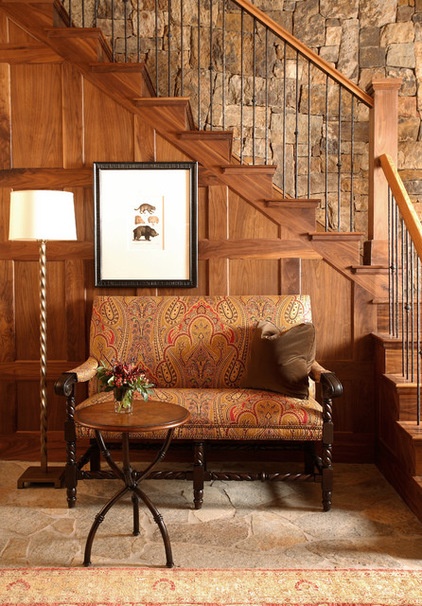
“All-over” paisley. If the stand-alone paisley pattern is too conspicuous for you, consider a paisley that has other design elements mixed in. This will create an all-over pattern that’s intricate and usually on the formal side, as on the handsome entryway bench shown here.
One of the benefits of this type of paisley pattern is that a number of other colors are often present, from which you can pull additional hues for secondary color schemes and accessories.
Note that these more intricate paisley patterns often have large repeats, so you may need more material, depending on your application.
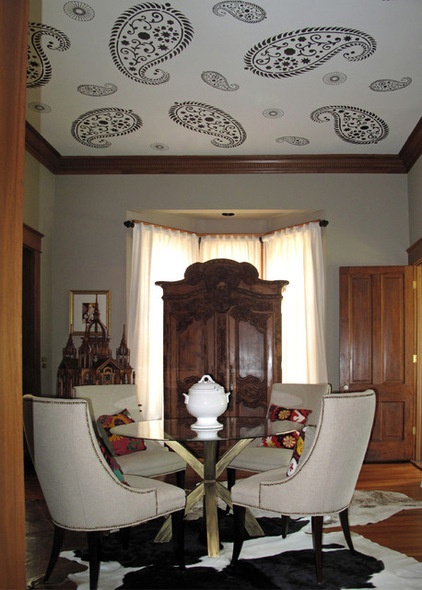
Unique graphic qualities of paisley. Unlike plaid and other patterns that rely on adjacent elements to create a whole pattern, paisley is self-contained. Because of this distinction, it can really stand alone and make a statement.
In this Atlanta sitting room, graphic paisley patterns of differing sizes have been strategically painted on the ceiling to create a heads-up focal point.
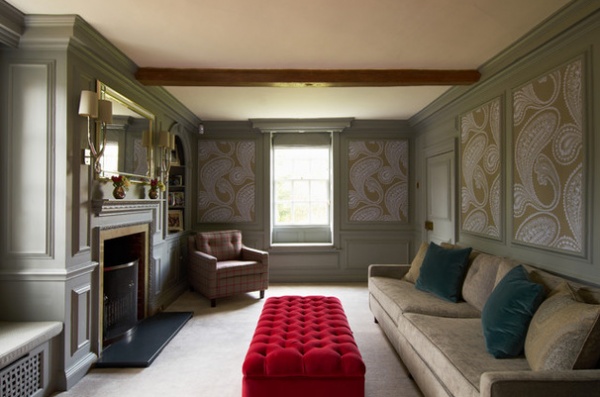
Large-scale paisley. The paisley pattern is curvaceous and has movement. Because it’s easier on the eye than, say, a geometric-based pattern like a check, it can work on a large scale without being visually paralyzing. This striking Rajapur wallpaper by Cole & Son has a substantial 30-inch (76-centimeter) repeat. It’s framed by architectural molding to offset it from the surrounding woodwork on the wall.
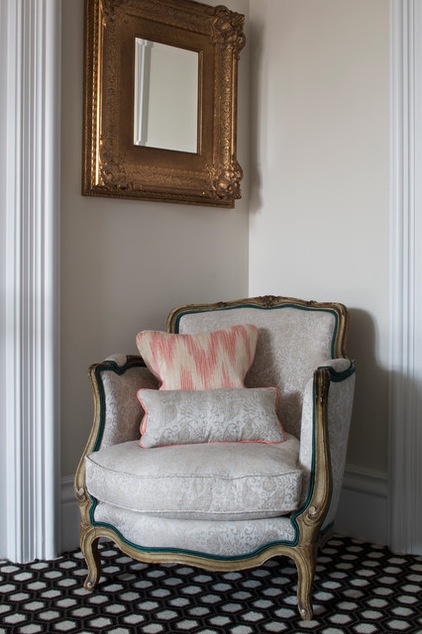
On the smaller side. If you’re not of the mindset that bigger is better, consider a more diminutive paisley, like this tonal paisley linen fabric.
Small-scale patterns tend not to be busy and easily mix with other patterns, especially bolder geometrics.
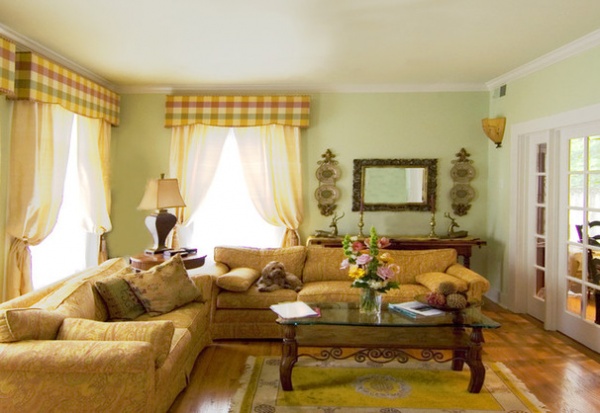
Textural paisley. Like many other patterns, paisley can be found on printed fabrics as well as heavier woven fabrics suitable for upholstery. One of the benefits of a woven paisley fabric is that it is textural; different surface levels capture the light differently. So, the swirling design adds not only visual but tactile interest. The gold woven paisley fabric on these two sofas is an Italian jacquard.
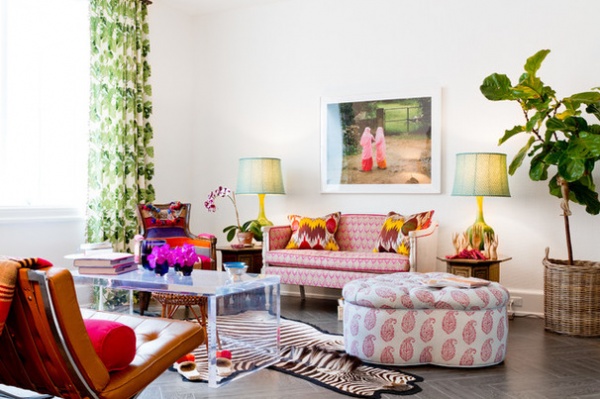
Printed paisley pattern. Some paisley patterns are printed on top of the fabric. In Indian block printing, which appears to be the method used for the fabric on this ottoman, wood-carved blocks are used to apply the pattern directly onto the fabric by hand. Printed fabric typically has a more casual aesthetic and is commonly used for light- to medium-use furniture, drapery and pillows.
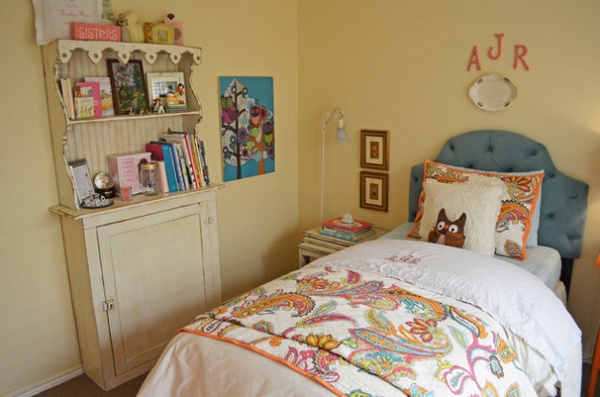
Paisley for grown-ups and kids. Ornate patterns are usually assigned to more formal, “mature” spaces. Paisley dispels this myth and works just as well in a child’s room as a clubby library. Here, its success hinges on the fresh, bright hues of the bed quilt.
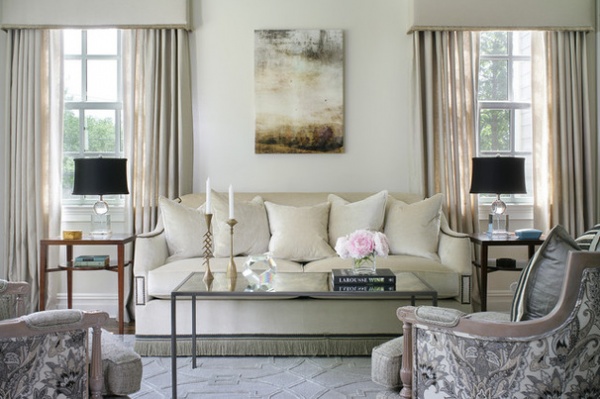
The paisley upholstered on the backs of these chairs is similar to the pattern shown in the child’s quilt in the previous image. However, the neutral tones change the mood to one that’s reserved, elegant and appropriate for this grown-up living room.
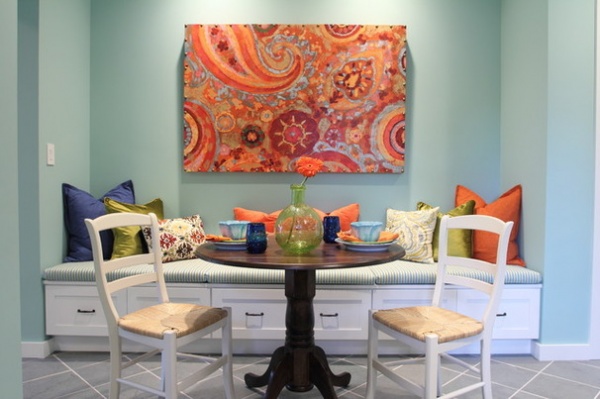
Paisley as artwork. Paisley is such a wonderful and enchanting pattern, it can even stand on its own as artwork.
See more patterns: Buffalo Check | Toile | Houndstooth
Related Articles Recommended












